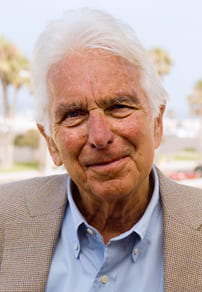
This blog first appeared on the Bloomberg Businessweek website.
The Miller Analogies Test (MAT) has always intrigued me. It aims to measure analytic reasoning based on connecting two extreme and partial analogies. So the MAT question of today is: What do Plato (b. 428 BCE) and “Professor” Harold Hill, (b. 1957 in Meredith Wilson’s Broadway hit, The Music Man) have in common? Class? … Class? … The envelope, please: “Ah, contextual intelligence!”
Plato believed philosophers were the best rulers of the ship of state. “A pilot,” he said, “must of necessity pay attention to the seasons, the heavens, the stars, the winds and everything proper to the craft if he is really to master the ship.” Not a bad metaphor for the clogged and complicated cartography of stakeholders facing managers today.
Harold Hill was a master con artist who traveled from one small Midwestern town to another, selling band instruments and uniforms to naive townsfolk and skipping town with the cash. He knew his River City audience like the palm of his hand. The show’s hit song featured a 20th century Platonic refrain the “professor” sang with gusto: “Ya gotta know the territory!” In a previous post, I showed that Falstaff gave identical advice to Prince Hal in Shakespeare’s Henry IV, Part I: “If you want to lead people, you’ve got to enter their world.”
Terrific leaders know this, not because they took an MBA course called “Contextual Intelligence 101”–does any school’s program have such a course?–but because they took pains to understand the context, the culture of the organizations they would lead. At times it was very painful learning. Two vivid examples come to mind. Rewind to Dec. 13, 1931, a little after 10 p.m. A middle-aged British statesman, Winston Churchill, was attempting to cross Fifth Avenue in New York and was struck by a car. The accident occurred because Churchill apparently forgot that in the U.S., traffic keeps to the right, whereas in his native U.K., it keeps to the left. He was taken to Lenox Hill Hospital, suffering from a serious scalp wound and a number of compression nerve fractures.
Alhough he hasn’t suffered any physical wounds from his contextual gaffes, Senator John Kerry has a knack for impromptu remarks that turn out to be far more serious and enduring than broken bones. During his 2004 campaign for the presidency, a flip response at a press conference in Pittsburgh virtually scuttled whatever dim chance he had of winning the election. When asked what his favorite sport was, he said: “Sailing.” The follow-up question was “Who is your favorite athlete?” (During Kerry’s Pittsburgh visit, Lance Armstrong was winning his sixth consecutive Tour de France, a world record.) With bland self-assurance Kerry singled out Germany’s Jan Ullrich, who built his career coming in just behind Armstrong for so many years he was called the “eternal No. 2 to Lance Armstrong.” Fortunately, Churchill did recover quickly, publicly took full blame for the accident, and invited the driver to tea. I have long given up trying to explain Kerry’s blunders.
When I think about B-schools and their challenge to build the social architecture–the learning environment that will facilitate student and faculty understanding of contextual intelligence–as well as their challenge to learn to pay attention to Plato’s “seasons, the heavens, the stars … everything proper to the craft” and to Harold Hill’s five-word clarion call, “Ya gotta know the territory,” I think of the University of North Carolina’s Kenan-Flagler Business School and Dean Jim Dean’s four years of wonderful leadership. He’s written and executed The Jim Dean Playbook of Context. I’d read a lot about Kenan-Flagler and chatted with former students and faculty, but my most useful time was spent talking with Jim and getting to know the nuts and bolts of his impact-based education.
In our first conversation, he told me: “In my four years as dean, one of my major strategic priorities has been research impact, which we define as ensuring that our research makes a difference in business practice as well as within academic circles. Note that we don’t see this as a tradeoff; you can clearly do both,” he said. “Here are the three main ways we use to promote research impact, both for our students’ education and the beneficial results to business practice”:
1. The Bullard Research Impact Award. This award is given each year to the faculty member whose research had the biggest impact on business practice. The $10,000 award is funded by alums. The inaugural award went to Ben Rosen for his research on the implications of generational differences in managing employees. This year’s award went to Valarie Zeithaml for her lifetime of work on service quality.
2. R.O.I. research magazine. Jim tells me they produce this magazine to provide research findings in language-accessible form to businesspeople. In reading over the last two years of R.O.I., I am struck by the vivid immediacy of the impact the articles provide: “The Role Credit Default Will Provide,” “Location Impacts Corporate Income Taxes,” “Supply Chain Management Remains an Obstacle to Disaster Relief,” and “Creating a Safe Environment for Employees to Seek Help,” to name just a few examples.
3. Next Generation conference series. “We’ve established a series of conferences to bring researchers and business professionals together,” Dean says. He sees these conferences working as new lenses for both faculty and students to see the world from a businessperson’s perspective, while at the same time influencing their research in a positive direction. The second conference in the series focused on “Brands & Branding in Law, Accounting and Marketing.”
There’s a lot more going on at Kenan-Flagler than this blog can cover. But one word that should accompany Mastering the Context: impact. Write to Dean Jim Dean for his playbook, in which he demonstrates how managing the context leads to a tripod of impacts–for students and faculty, and for managers.
Join the discussion on the Bloomberg Businessweek Business School Forum, visit them on Facebook, and follow @Schoolbooks on Twitter.